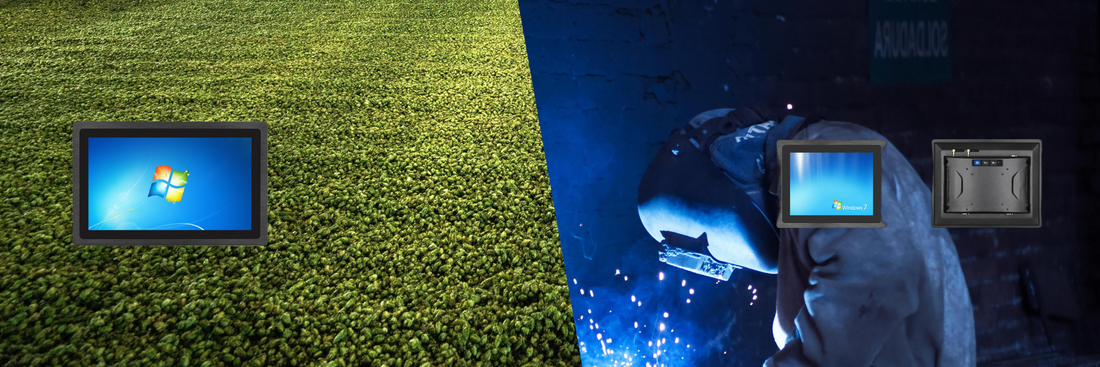
Unlocking the Potential of Windows 10 IoT Enterprise: An In-Depth Exploration
Unlocking the Potential of Windows 10 IoT Enterprise: An In-Depth Exploration
The evolution of technology has profoundly transformed the way industries operate, especially with the proliferation of the Internet of Things (IoT). Central to this transformation has been the advancement of operating systems designed for embedded computing. One such major leap was the transition from Windows Embedded to Windows 10 IoT Enterprise. This operating system serves as a foundation for the interconnected, industrial-grade IoT applications that power various smart systems, from factory automation to retail kiosks.
In this article, we will dive deep into the evolution from Windows Embedded to Windows 10 IoT Enterprise, discuss its technical underpinnings, and highlight the unique benefits this system brings to enterprises aiming to scale their IoT devices. We will also explore key features that enable industrial and embedded applications to function seamlessly in demanding environments.
The History of Windows Embedded: Setting the Stage for IoT
Before we delve into Windows 10 IoT Enterprise, it’s essential to understand the legacy of its predecessor, Windows Embedded. Released by Microsoft, Windows Embedded was a version of the Windows operating system tailored for embedded systems, providing the flexibility to strip down unnecessary features and components.
Key Customization Features of Windows Embedded
Windows Embedded allowed developers to choose only the necessary features for their devices, creating lean, purpose-built systems. This level of customization was instrumental for manufacturers who were deploying devices like point-of-sale (POS) systems, ATMs, and self-service kiosks where unnecessary functions could lead to inefficiency, higher security risks, or increased storage use. Custom splash screens and branding options further allowed businesses to integrate their identity directly into the operating system, making the user experience more cohesive and brand-specific.
Moreover, Windows Embedded played a significant role in reducing the attack surface for industrial systems by eliminating superfluous components. This minimized potential vulnerabilities, ensuring that only essential, secure features were active on the deployed machines.
Windows Embedded 7 and 8: A More Focused Approach
Windows Embedded 7 and 8, referred to as WES7 and WES8, introduced even greater flexibility. WES7, for example, was derived from the robust Windows 7 operating system and came in various versions (E, C, and P) tailored for different use cases. Developers could not only remove unneeded system components but also customize the user interface and functionalities in significant ways. For instance, features specific to consumer PCs like media players and desktop applications could be excluded from devices like interactive kiosks, making the deployment highly specialized and more secure.
Despite its widespread success in the embedded market, it became evident that the next phase of computing would involve not only embedded systems but large-scale, interconnected IoT environments. Thus, Windows Embedded paved the way for the launch of Windows IoT Enterprise in 2015.
What is Windows 10 IoT Enterprise?
Windows 10 IoT Enterprise is the industrial-grade version of Windows 10, tailored to meet the unique needs of embedded systems and IoT devices. Microsoft introduced this operating system as the next generation of embedded solutions, combining the flexibility of Windows Embedded with modern IoT-specific features. It is designed to bring connectivity, security, and powerful management capabilities to the IoT devices that industries depend on.
Windows 10 IoT Enterprise offers enterprises the scalability to deploy hundreds or even thousands of devices, allowing for central management and seamless updates across an IoT network. Whether you are managing a fleet of industrial automation systems or hundreds of retail self-checkout stations, Windows 10 IoT Enterprise provides the backbone for large-scale device control.
Industrial-Grade Security and Performance
One of the biggest challenges faced by IoT device deployments is security, given the potential for widespread cyberattacks. Windows 10 IoT Enterprise addresses this challenge head-on with enterprise-grade security features. Notably, the Long-Term Servicing Channel (LTSC) version of Windows 10 IoT Enterprise offers a locked-down system environment, preventing unauthorized updates that could destabilize critical systems. By minimizing updates to only critical security patches, organizations can maintain highly stable and secure systems while ensuring uptime and operational continuity.
Feature Comparison: Windows 10 IoT Enterprise vs. Windows Embedded
Customization and User Control
Both Windows Embedded and Windows 10 IoT Enterprise allow for extensive customization, but Windows 10 IoT Enterprise expands on these capabilities. While Embedded systems could strip down unnecessary features, IoT Enterprise introduces more modern tools such as App Locker, Layout Control, and Shell Launcher. These tools allow developers to not only remove unwanted features but also to create highly personalized interfaces tailored to specific user experiences. Moreover, security is taken a step further with Controlled Boot, which ensures only trusted software is loaded during the system’s boot process, safeguarding systems from malware or unauthorized changes.
Unified Write Filter (UWF)
A standout feature of Windows 10 IoT Enterprise is the Unified Write Filter (UWF). This feature intercepts any changes made to a system’s drives and redirects them to a virtual overlay that can be cleared upon system reboot or logout. This prevents permanent changes and ensures that no unauthorized software or configurations can tamper with the system—an invaluable feature for devices that are used by multiple users or deployed in unsupervised environments.
IoT-Specific Controls
Another key aspect of Windows 10 IoT Enterprise is its support for embedded devices' unique functionalities such as USB, Gesture, and Dialogue Box Filters. These filters ensure that only authorized USB devices can be used, gestures like screen swipes are restricted, and irrelevant or confusing system dialogs are hidden from end-users. This further enhances the security and stability of industrial devices deployed in environments like retail kiosks, where user interaction must be tightly controlled.
Windows 10 IoT Enterprise vs. Windows 10 Pro
While Windows 10 Pro is often used in general-purpose PCs and small-scale business operations, it is not ideally suited for large-scale IoT or industrial deployments. Here’s a breakdown of the key differences between Windows 10 Pro and Windows 10 IoT Enterprise:
- Forced Updates: Unlike Windows 10 Pro, which forces regular updates on users, IoT Enterprise gives organizations complete control over the update schedule. This prevents system downtime caused by unexpected updates, which is crucial for devices that require high availability, like industrial control systems or retail POS terminals.
- 10-Year Support Lifecycle: Windows 10 IoT Enterprise LTSC versions come with a 10-year support cycle, meaning that the operating system will receive security updates and patches for a decade, while Windows 10 Pro generally offers 18 to 30 months of support. For companies investing in long-term deployments of industrial computers, this extended support is vital.
- Enhanced Security Features: Windows IoT Enterprise provides more robust security controls than Windows 10 Pro, including Bitlocker Device Encryption, Device Guard, and UEFI Secure Boot, making it ideal for embedded systems where security cannot be compromised.
Applications of Windows 10 IoT Enterprise
Windows 10 IoT Enterprise powers a variety of embedded devices across industries. Here are some prominent examples:
- Interactive Kiosks: From self-service ticketing machines to airport check-in stations, Windows 10 IoT provides the robust and secure infrastructure these kiosks need to operate efficiently.
- Retail Automation: IoT systems in retail environments such as POS systems and self-checkouts rely on Windows 10 IoT to ensure fast, secure transactions and to protect sensitive customer data.
- Factory Automation: Windows 10 IoT plays a key role in enabling the seamless automation of industrial processes, managing everything from machine control to supply chain logistics.
- Smart Gateways and Edge Devices: Windows IoT provides the computing power for smart gateways, edge devices, and autonomous vehicles, allowing for real-time data processing and decision-making at the edge of networks.
Conclusion: The Future of IoT with Windows 10 IoT Enterprise
As industries continue to embrace the benefits of IoT, the importance of a secure, scalable, and customizable operating system becomes paramount. Windows 10 IoT Enterprise represents the cutting edge of Microsoft’s embedded systems, providing organizations with the tools they need to succeed in the age of smart devices and interconnected networks.
Whether you are building retail automation solutions, managing factory equipment, or deploying smart city infrastructures, Windows 10 IoT Enterprise offers the ideal platform for secure, long-term device management.
To explore more about industrial-grade solutions and how advanced operating systems can support your embedded devices, visit IMDTouch or contact support at support@IMDTouch.com for expert guidance.
